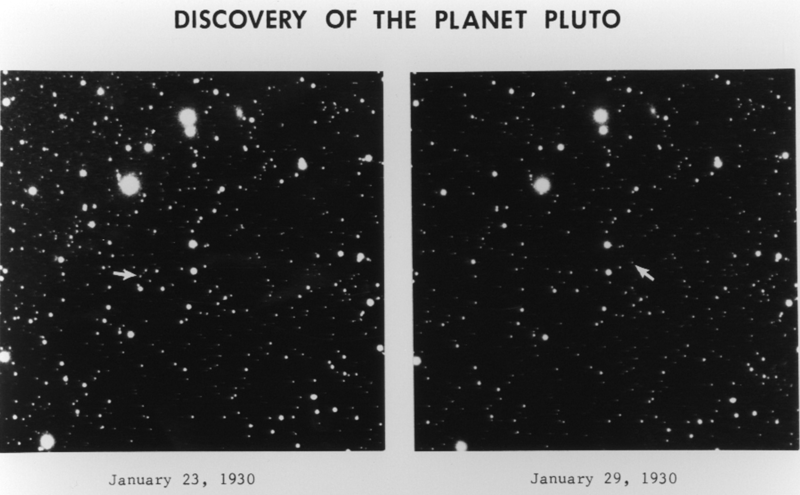Once the planet Uranus was discovered, astronomers have suspected that there are probably more planets in the Solar System. Astronomers used Newtonian mechanics to predict Neptune from its perturbations of Uranus’ orbit. German astronomer Gottfried Galle found Neptune exactly where calculations predicted it should be.
Now that they knew the method worked, astronomers set about finding other planets beyond Neptune. In the late 19th century, astronomers were starting to suspect that another body was pulling on both Uranus and Neptune, and so they tried to calculate its position, and then go look for it.
Percival Lowell, a wealthy Bostonian who founded the Lowell observatory in Flagstaff, Arizona, took up that search. He searched from 1905 all the way up to his death in 1915, and he never found it.
The job then turned to a young astronomer named Clyde W. Tombaugh – a 22-year old Kansas farm boy. Tombaugh spent the better part of a year staring at two photographic plates capturing the same region of sky at two different points in time.
Using a tool called a blink comparator, Tombaugh finally turned up images of Pluto moving in 1930. It turns out there had been evidence of Pluto in earlier photographs, but nobody had noticed it yet.
As the discoverers, Tombaught and his team were given the honor of naming Pluto. In the end, they settled on the name Pluto, suggested by a British school girl.

